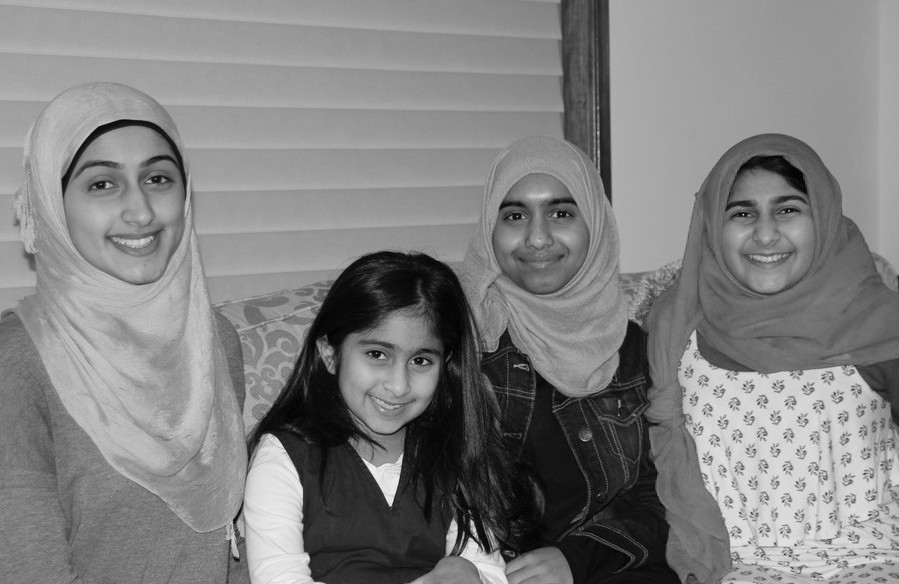
RNA - A few years ago, in a quiet high school classroom, Fatimah Mozawalla took a pre-calculus exam wearing an ornate, brightly colored dress — a spectacle that she said called unwanted attention to herself and messed with her focus.
“I was so embarrassed, and I remember, like, I tried to finish my test as fast as I could,” the 17-year-old South High School alumna said. “ … Twelfth grade, 16 years old — I just wanted to get out of there and go to the locker room and change.”
“Because it makes you feel like an outcast,” her friend, Sabrina Mustafa, 17, interjected.
The exam fell on one of two Eid holidays celebrated by Muslims each year — Eid al-Adha and Eid al-Fitr — effectively forcing students to choose between their religious beliefs and their grades.
“I have to choose between whether I’m gonna get 100 on my pre-calc test or whether I’m gonna go and enjoy with my family and get gifts and pray,” Fatimah said. “I shouldn’t have to choose between being a student and being Muslim.”
Valley Stream’s high schools are now debating whether to recognize the two most significant Muslim holidays on the school calendar next year, after some 400 people attended the district’s board meeting on the evening of Election Day seeking the change.
Beginning last year, New York City Mayor Bill de Blasio officially designated the Eid holidays for public schools in the city. As part of the designation, administrators mapped out a plan for the next 30 years to coordinate school calendars because holiday dates change every year based on the lunar calendar.
Syosset schools added the two Muslim holidays and Diwali, the Hindu festival of light, to next year’s school calendar in October. Just last week, the East Meadow school district approved Eid al-Adha and Diwali for next year’s school calendar. Several other Nassau County schools are considering adding the holidays, including Herricks, East Williston and Jericho. The Mineola School District recently approved a motion to ensure students who celebrate the holidays won’t have homework next year on those dates, but did not give them the days off.
Bill Heidenreich, superintendent of the Central High School District in Valley Stream, said that because of the centralized high school setup, approving the holidays for the calendar would need to involve all affected elementary districts. The Board of Education agreed on Dec. 6 to make the issue a priority and discuss it with each of Valley Stream’s elementary school districts. Next year’s calendar must be adopted by April 1.
“We have a very diverse community,” Heidenreich said. “I think that’s one of the strengths of Valley Stream, and the more we can do to recognize that diversity, I think it bodes well for us.”
Heidenreich said the district monitored attendance rates from Eid al-Adha in September, and that there were 225 to 250 absentees, or about 5 percent of students. That number, he said, was likely a low estimate, because many Muslim students feel pressure to attend class anyway.
Trustee Anthony Iadevaio expressed concern about where the holidays would come from, because schools in New York state must have 180 days of instruction each year. “Once you put that in, you can’t get it back,” he said.
Board President Cristobal Stewart, spoke favorably of the idea, and of how much of an impact it would make on students and their families.
“We’re talking about really recognizing an emerging community within our community,” Stewart said. “As someone who has children in the high school, I can tell you there’s always a need to have more dialogue about diversity. There’s always a need to have more dialogue about tolerance, and to have that dialogue occur on equal footing lends an importance to that discussion and elevates it.”
Hempstead Town Clerk Nasrin Ahmad, a Republican, spoke at the board meeting in favor of granting the holidays. Ahmad, who is Muslim, was born in Uganda, raised in England and then moved to the U.S. She said that Valley Stream’s Muslim population is “so vast” that it warranted an acknowledgement on its school calendar.
“The American dream is still living and I am living proof of it,” she said, adding that she hoped the district “will adopt these holidays for the benefit of the families and children.”
In addition to being an inconvenience, students said not being off on their biggest holiday contributed to a feeling of “otherness” in the Muslim community.
“Not having Eid off makes me feel like an outsider in my own home,” Fatimah said. “South High School I went to, my parents went to, I was born here, my parents were born here. I shouldn’t be made to feel like a foreigner in somewhere where I’m not.”
Masjid Hamza, a Valley Stream mosque, hosts early-morning prayer services on the holidays beginning at 6 a.m., but when Eid holidays fall on a school or work day, attendance is noticeably sparse, the students said.
Ameena Qadri, 14, a South High School student, said she’s attended prayer before school in the past, but was distracted by one thought: “I need to get to school, I need to get to school,” she said. Some teachers at SHS have asked her why she is going to be absent on the Eid holiday, Ameena said, which she used as evidence that recognizing the holiday on the school calendar would bring about more awareness.
Though it may seem insignificant to non-Muslims, she said, an acknowledgment of the holidays might have made her decision to start wearing her hijab — a traditional Muslim headscarf worn by women — a less vexing one.
“What we’re going through is tough,” she breathed. “And it’s really scary.”
847/940